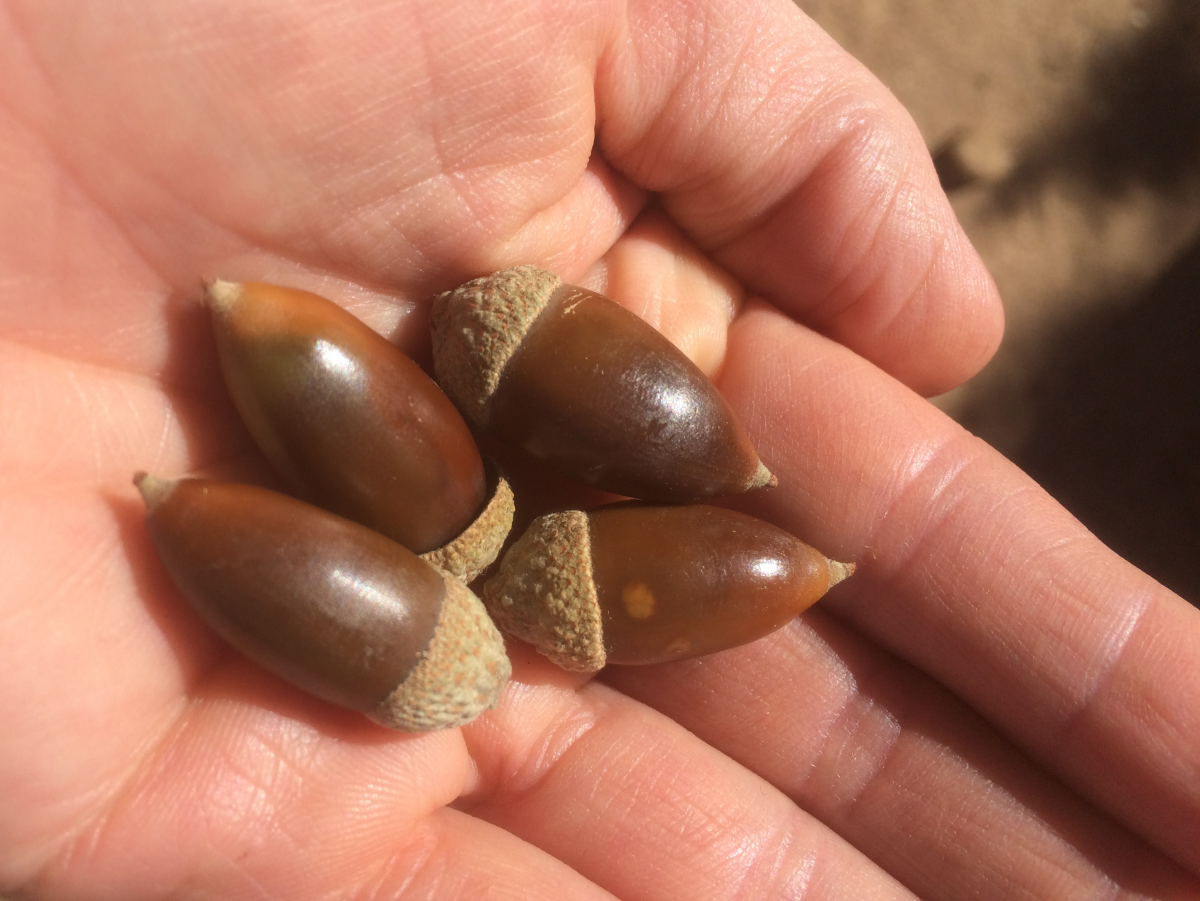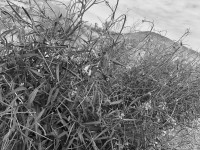Acorn

NOVEMBER INGREDIENT: ACORN
Oak trees are prolific food producers, offering up meaty, soft nuts packaged in sturdy shells with rugged caps, known to everyone as the iconic acorn. Southern California hosts several of the 900 species worldwide; coast live oak, canyon oak, black oak, and scrub oak dominate desert-fringe terrain. With each tree being capable of producing hundreds of pounds of wholesome dense fruits, acorns were a staple in native diets and remain an important wild food source for both humans and animals. These little nuggets vary in shape and size, but generally boast an impressive nutritional profile, ranking high in the fat, fiber, and carbohydrate categories. It’s a perfect fall food, versatile and adaptable to any number of holiday dishes calling for flour or nuts. You can purchase acorn flour in Asian and specialty markets, but if you’re feeling ambitious, you’ll be rewarded with rich, nuanced flavors from fresh acorns you process at home. Just make sure you properly leach them—a necessary process to render acorns edible. There’s a lot of info out there on the web, so before you get started, be sure to do some research. And as always, harvest sustainably and with permission.
—Sarah Witt
For more information on HDTK, as well as more helpful tips on acorn’s many uses, check out Sarah’s website.
Monday, November 20th at 7pm
Copper Mountain Mesa Community Center
65336 Winters Rd. Joshua Tree, CA
High Desert Test Kitchen (HDTK) is an informal monthly dinner gathering organized by artist Sarah Witt. Participants bring a dish to share that is either made with or inspired by ingredients inhabiting this peculiar span of the North American desert. Exploring the Mojave from a culinary perspective, HDTK naturally intersects with foraging practices and Native American traditions, and inevitably ignites debates concerning ethical human-to-wilderness relationships - hopefully challenging our taste buds too.
From September 2016 to July 2018 Sarah Witt organized High Desert Test Kitchen (HDTK), a monthly dinner gathering at the Copper Mountain Mesa Community Center in North Joshua Tree. Each month a different ingredient was featured with the challenge of incorporating local desert roots, fruits, insects, or a handful of twigs into a culinary repertoire. Participants would bring a dish to share, gathering together to discuss where the ingredients were sourced, the manner in which they were processed, and to consider their EQ (or edibility quotient). To read more about these native ingredients visit Sarah’s website.


















